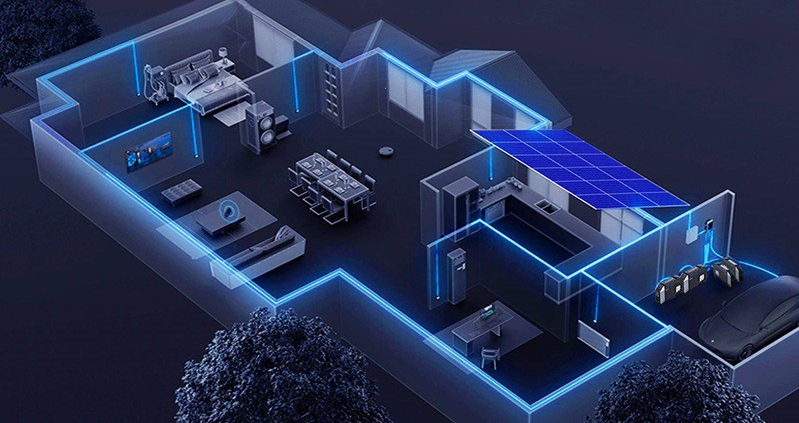Low vs High Voltage Home Energy Storage Systems: Pros, Cons & Applications
As home energy needs evolve and solar adoption increases, residential energy storage systems (RESS) are no longer optional—they’re essential. One of the most important decisions homeowners face when installing a battery system is whether to choose high-voltage or low-voltage lithium batteries. This decision can affect safety, efficiency, system design, and future scalability.
In this article, we’ll explore the technical differences between high and low voltage batteries, their respective benefits and trade-offs, and how to decide which option is right for your home.
- What Is Considered High or Low Voltage in Home Batteries?
- Low Voltage Batteries typically operate at 48V or lower.
- High Voltage Batteries operate at 100V to over 400V, depending on the configuration.
This voltage difference is more than just a number; it affects how electricity flows through your home system, what components are compatible, and how much energy loss occurs during conversion.
- Technical Differences Between Low and High Voltage Systems
2.1 System Architecture
- Low-voltage systems often use more current to deliver the same power, which can lead to greater heat loss and requires thicker cabling.
- High-voltage systems use lower current to deliver the same power, which increases efficiency and reduces installation footprint.
2.2 Module Configuration
- Low-voltage batteries are easier to wire in parallel.
- High-voltage systems often require stacking multiple modules in series to achieve the required voltage.
2.3 BMS and Communication
- High-voltage systems rely on advanced Battery Management Systems (BMS) to ensure safety and efficiency.
- Communication protocols (like CAN or RS485) must be compatible with the inverter.
- Real-Life Use Cases: When to Choose Which
Low Voltage Systems Are Ideal For:
- Off-grid homes and cabins
- RV and tiny house applications
- Users seeking DIY-friendly systems
If you fall into this category, consider a modular and safe solution like the Low Voltage Stackable Residential Energy Storage System, which allows for flexible configuration and is compatible with most hybrid inverters.
High Voltage Systems Are Best For:
- Large homes with high daily energy use
- Grid-tied solar with fast charging/discharging needs
- EV charging integration
For these scenarios, a system such as the High Voltage Stackable Residential Energy Storage System provides superior energy efficiency and future scalability.
- Efficiency, Safety, and Maintenance
4.1 Energy Efficiency
- High-voltage batteries minimize transmission loss and convert DC to AC more efficiently.
- Low-voltage systems tend to lose more energy as heat during conversion.
4.2 Safety
- Low voltage systems pose less risk of electrical shock and are often considered safer for DIY installation.
- High voltage systems must be installed by certified professionals due to increased safety risks.
4.3 Maintenance & Monitoring
- Both types benefit from real-time monitoring via integrated BMS.
- High-voltage systems typically include more advanced diagnostic tools.
- Installation, Cost & Regulatory Considerations
5.1 Installation Complexity
- Low-voltage batteries are generally simpler to install and require less regulatory oversight.
- High-voltage installations need proper insulation, spacing, and grounding per NEC (National Electric Code).
5.2 Cost Breakdown
| Component | Low Voltage | High Voltage |
| Battery Cost | Moderate | Slightly Higher |
| Inverter Compatibility | Wide | Limited |
| Installation Labor | Lower | Higher |
| Cable & Accessories | Thicker cables | Slimmer cables |
5.3 Local Codes and Compliance
- Some jurisdictions may have restrictions or extra permitting steps for high-voltage systems.
- Always consult a licensed installer familiar with state-specific codes.
- U.S. Market Trends & Technological Outlook
6.1 Shift Toward High-Voltage Systems
- Newer residential solar-plus-storage systems favor high voltage for greater efficiency.
- Commercial-grade technologies are trickling down into high-end residential setups.
6.2 Modular Stackable Systems
- Both voltage types now support stackable designs, simplifying scaling and maintenance.
- These systems reduce downtime and improve heat dissipation.
6.3 Smart Energy Management
- High-voltage batteries are more compatible with smart grid and HEMS (Home Energy Management Systems).
- Remote monitoring and AI-driven optimization are increasingly supported.
- How to Choose: Key Considerations
| Factor | Choose Low Voltage If… | Choose High Voltage If… |
| Home Size | Small to medium | Medium to large |
| Safety | You prefer DIY-safe | You have pro installers |
| Solar System | <6kW PV array | >6kW or hybrid system |
| Backup Time | 1-3 hours | 4+ hours or whole-home |
| Budget | More price-sensitive | Willing to invest for ROI |
Take the time to evaluate your home’s energy consumption patterns, backup expectations, and any planned expansions like EV charging or heat pumps.
- Frequently Asked Questions (FAQ)
Q: Can I upgrade from a low-voltage to high-voltage system later?
A: Not directly. The two systems use different inverters and wiring standards, so a complete system redesign would be required.
Q: Which system is safer?
A: Low-voltage systems are inherently safer for installation and handling. However, high-voltage systems are safe when installed by professionals.
Q: Do both systems support solar integration?
A: Yes, but high-voltage systems may offer better inverter pairing for advanced solar setups.
Q: What about lifespan and warranty?
A: Both systems typically offer 10+ years lifespan and similar warranties if using LiFePO4 chemistry.
- Conclusion
Choosing between a high or low voltage lithium battery system depends on a combination of technical needs, safety considerations, and long-term energy goals.
For smaller homes or off-grid applications, low-voltage solutions provide simplicity and safety. For larger homes, solar integration, or advanced energy management, high-voltage systems offer superior performance and future readiness.
Always consult a qualified installer to assess your home’s needs before making a final decision. Your energy independence starts with the right battery voltage.


